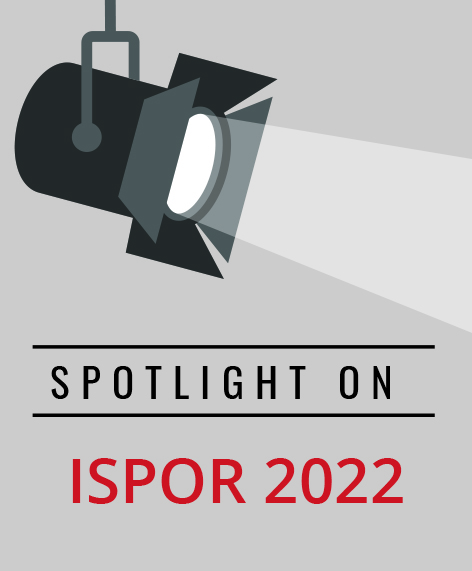Poster Session Recap: Mental Health
Mark Bounthanvong, PharmD, PhD, UCSD Skaggs School of Pharmacy & Pharmaceutical Sciences, San Diego, CA, USA
Comparative Effectiveness of Sertraline, Fluoxetine Versus Escitalopram Among Adults With Depression in the United States
Presenter: Kwame Adjei, Florida A & M University, Tallahassee, FL, USA
Summary: Researchers at Florida A & M University conducted a comparative effectiveness evaluation of sertraline, fluoxetine, and escitalopram monotherapy on psychological distress among adults with depression. Using data from the US Medical Expenditure Panel Survey (MEPS) from 2012-2019, the researchers identified 814 patients who were diagnosed with depression and initiated antidepressants and measured changes in the Kessler Index (K6) scores for psychological distress. Patients who initiated fluoxetine had the highest improvement rate (91.87%) compared to escitalopram (90.38%) and sertraline (90.27%). All antidepressants improved K6 scores, but further study is needed to evaluate healthcare utilization associated with these antidepressants.
Leveraging Laboratory Results From Multiple Data Sources to Re-Assess a Possible Association Between Serum Uric Acid and Schizophrenia in Real-World Practice Settings
Presenter: Rolin L. Wade, IQVIA, Falls Church, VA, USA
Summary: Researchers at IQVIA used multiple sources of laboratory data to evaluate the association between serum uric acid and schizophrenia. A total of 2124 patients with schizophrenia were gender/age matched to a control group of patients without schizophrenia. No association was reported between serum uric acid and schizophrenia; however, associations were reported for other clinical profiles between serum uric acid levels and schizophrenia diagnosis.
Patient Versus Caregiver and Clinician Reports of Cognitive Difficulties in Patients With Schizophrenia Switching to Long-Acting Injectable Antipsychotic Aripiprazole Lauroxil: A Post Hoc Analysis
Presenter: Sabina M. Gasper, Alkermes, Inc, Waltham, MA, USA
Summary: Researchers at Alkermes, Inc investigated potential differences in patient, caregiver, and clinical reports on the New York Assessment of Adverse Cognitive Effects or Neuropsychiatric Treatment (NY-ACCENT) for patients with schizophrenia switching to long-acting injectable antipsychotic aripiprazole lauroxil. A total of 35 patients who completed the study were switched from paliperidone palmitate or risperidone long-acting injection to aripiprazole lauroxil and the NY-ACCENT was measured at baseline and 6 months after switching. Congruence in reported NY-ACCENT between patients and clinicians were fair to substantial agreement, but fair between patients and caregivers.
Real-World Calibration of the Disease Recovery Evaluation and Modification (DREaM) Randomized Clinical Trial in Adult Medicaid Beneficiaries With Recent-Onset Schizophrenia
Presenter: Charmi A. Patel, Janssen Scientific Affairs, LLC, Titusville, NJ, USA
Summary: Using the Disease Recovery Evaluation and Modification (DREaM) post hoc analysis, researchers were able to calibrate these comparative effectiveness results to a target real-world populations on 3 different sequential strategies: (1) oral antipsychotics (OAPs), (2) OAP and then switch to paliperidone palimate (OAP-PP), and (3) PP switched to PP (PP-PP). The real-world cohort was derived from the Truven IBM Medicaid Managed Care databases and matched using baseline variables identified from double-lasso regression methods. Psychiatric hospitalization at 18 and 30 months was the main endpoint. After calibration, patients in the PP-based regimen had larger reductions in psychiatric hospitalizations; at 30 months, there were reductions up to 1.4 hospitalizations per patient. Successful calibration of the DREaM post hoc analysis to the Medicaid Managed Care cohort allowed researchers to identify reductions in psychiatric hospitalizations among patients with schizophrenia and on PP-based regimens.
Real-World Naloxone Prescription Trends, Costs, and Comorbidities in Commercial, Managed Medicare, and Medicaid Patients in the United States (2016-2019)
Presenter: Arun Changolkar, Emergent BioSolutions Inc, Philadelphia, PA, USA
Summary: Researchers at Emergent Biosolutions, Inc evaluated the prescription naloxone patient trends and other characteristics among patients at risk for opioid overdose using anonymized commercial, managed Medicare, and Medicaid patient claims from Optum between January 2016 to December 2019. Naloxone prescribing increased among patients with opioid prescriptions. Large increases in naloxone prescribing were observed among patients who were 50 years and older and with Medicaid (18.91%) followed by Medicare (9.11%) and commercial insurance (7.91%). Additionally, there was a 56% increase in the per member per month costs between 2016 and 2019. Moreover, there was a distinct decrease in naloxone prescribing by 18.71% among Caucasians, decrease of 6.58% in males, and a 6.59% increase among females between 2016 and 2019.

